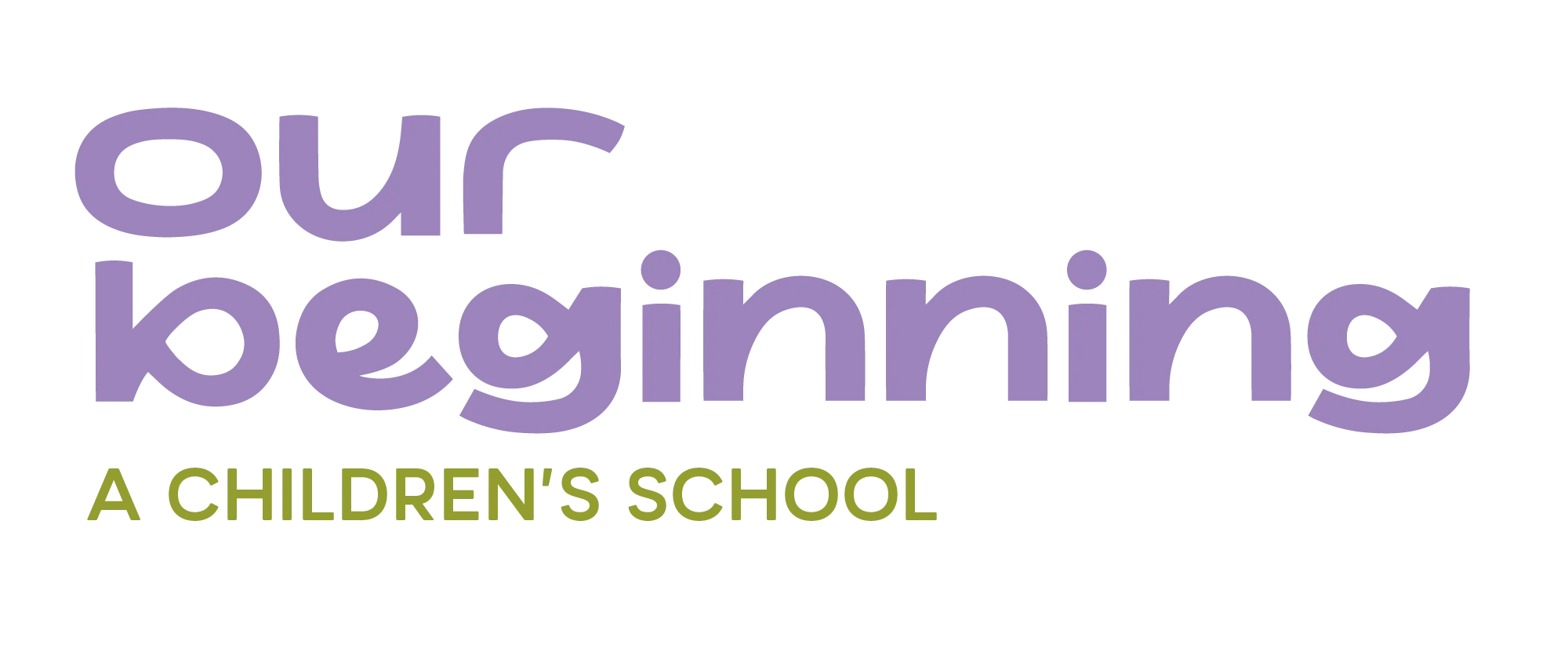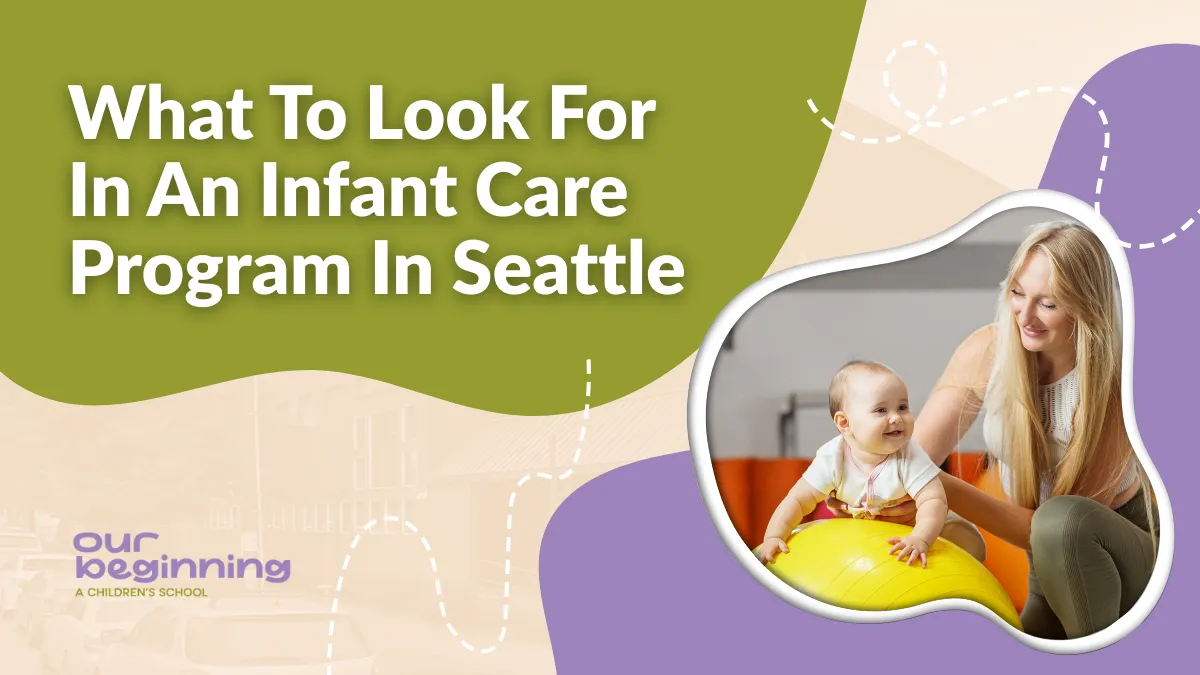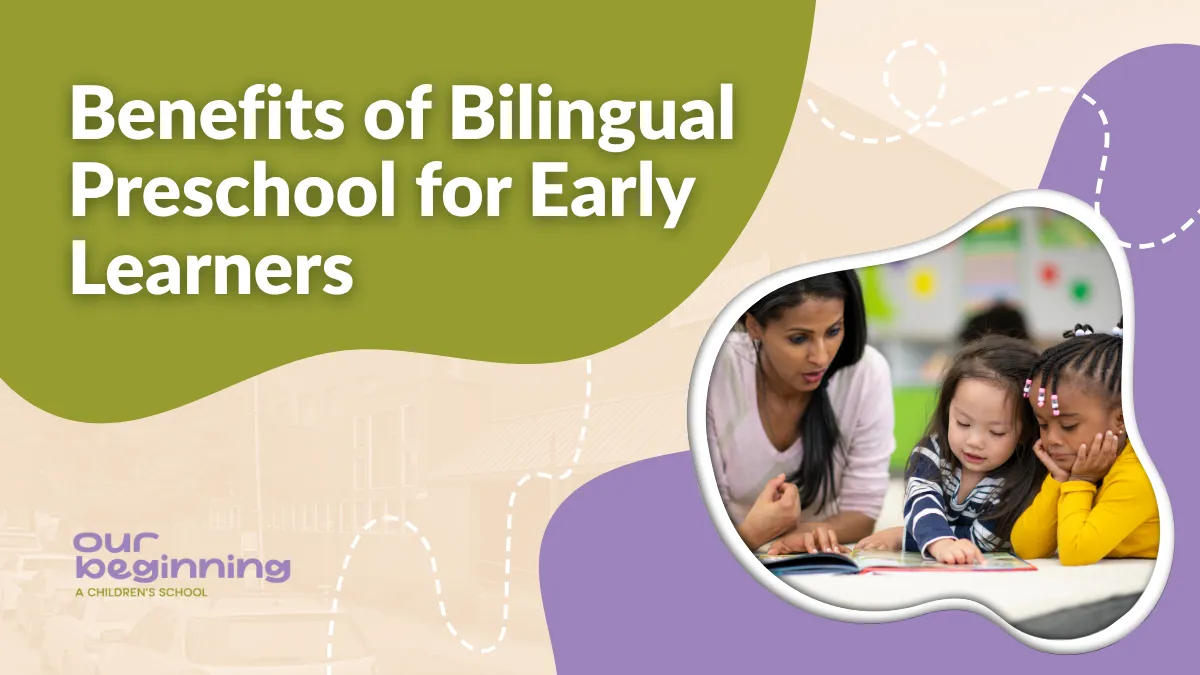A Reggio Emilia preschool in Seattle nurtures independent thinkers by honoring children’s curiosity as the learning engine. Teachers act as co-researchers, preparing atelier spaces with natural materials and open-ended projects that invite inquiry and problem-solving. Ongoing documentation makes thinking visible and promotes reflection with peers and families.
Rather than scripted lessons, an emergent curriculum grows from children’s questions and daily experiences in their community. The city serves as an extended classroom through neighborhood walks and real-world connections. Children practice observation, collaboration, and language, building confidence to explore ideas, test hypotheses, and construct knowledge together.
Child-Led Learning Preschool: Reggio Emilia Principles in Action
Children learn best when their ideas shape the day. In a Reggio Emilia preschool in Seattle, teachers listen closely to children’s questions and build projects that grow from those interests. The approach treats the environment as a third teacher, aligning daily routines with inquiry so children practice autonomy, collaboration, and purposeful communication.
Play-Based Curriculum Seattle Families Value
Seattle families value a play-based curriculum that turns curiosity into purposeful learning. In a Reggio Emilia preschool, play is the context where language, STEM habits, and social–emotional growth emerge through rich materials and thoughtful guidance. Children meet real questions from their city and represent ideas through many media.
Child-Led Learning Preschool: Reggio Emilia Principles in Action
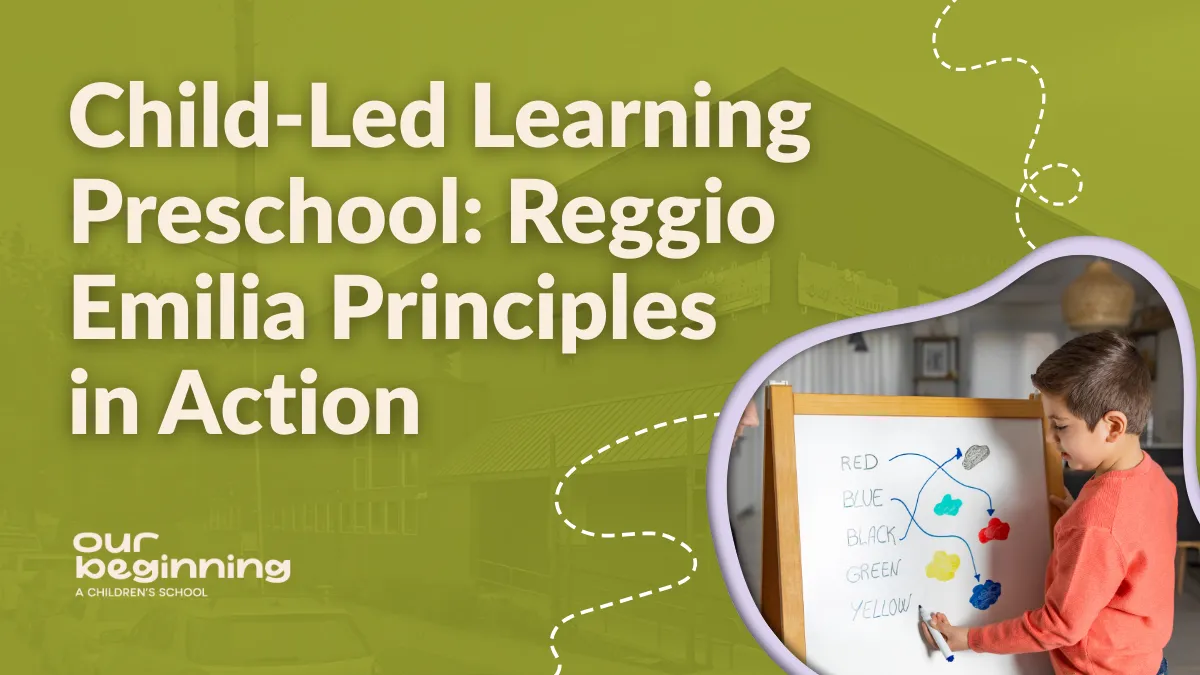
Children learn best when their ideas shape the day. In a Reggio Emilia preschool in Seattle, teachers listen closely to children’s questions and build projects that grow from those interests. The approach treats the environment as a third teacher, aligning daily routines with inquiry so children practice autonomy, collaboration, and purposeful communication.
Emergent Projects Sparked by Children’s Questions
Emergent projects begin with genuine wonder and unfold over time. Educators curate environments that invite careful looking and conversation. Materials and spaces are arranged to suggest possibilities without dictating outcomes.- Thoughtful provocations: Simple setups spark noticing, questions, and early theories.
- Open-ended materials: Loose parts and natural media support many ways to represent ideas.
- Visible planning tools: Maps, sketches, and storyboards help children revisit and extend work.
Teachers as Co-Researchers: Observation, Listening, and Scaffolding
Teachers act as co-researchers who observe, document, and scaffold at the right moment. The aim is to keep ownership with the child while offering just enough support.- Attentive listening: Open questions surface intent and expand vocabulary.
- Responsive documentation: Photos and transcripts make thinking visible for planning.
- Purposeful tools: Clipboards, magnifiers, and light tables deepen inquiry.
Small-Group Collaboration and Long-Term Investigations
Collaboration grows in small groups where children negotiate roles and share resources. Long-term investigations provide time to iterate and add complexity.- Structured choice: Clear options build decision-making without removing autonomy.
- Peer discourse: Protocols for turn-taking and feedback nurture respectful dialogue.
- Real-world links: Walks, experts, and data collection connect learning to the community.
Play-Based Curriculum Seattle Families Value
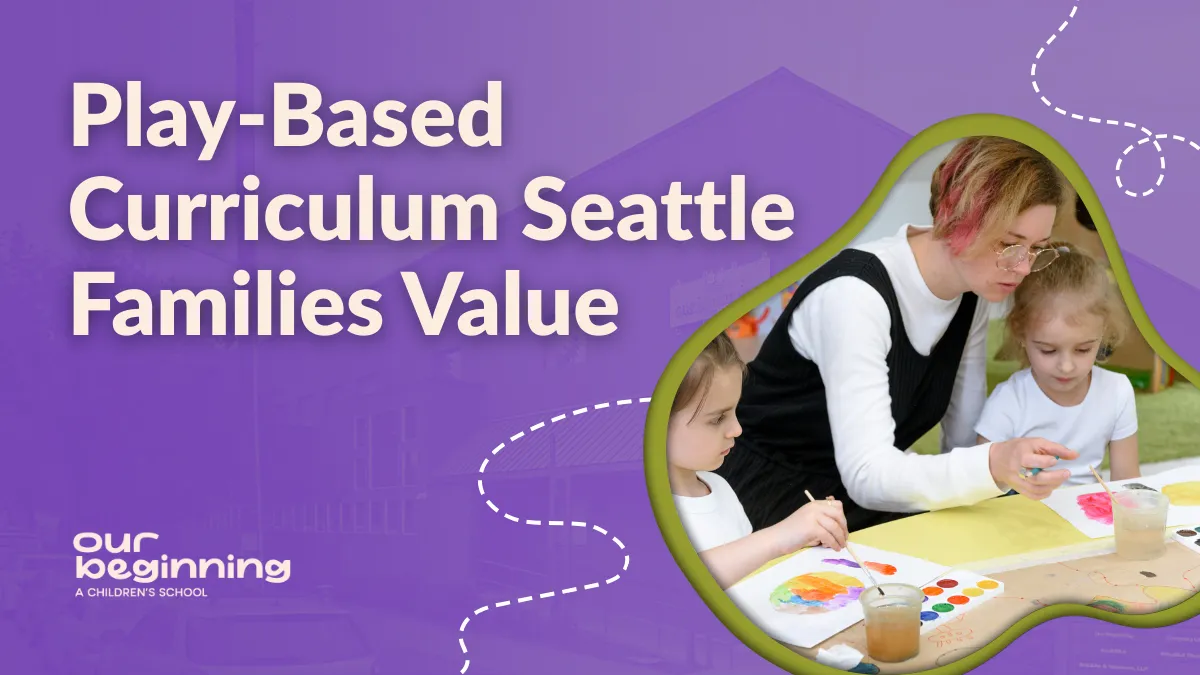
Seattle families value a play-based curriculum that turns curiosity into purposeful learning. In a Reggio Emilia preschool, play is the context where language, STEM habits, and social–emotional growth emerge through rich materials and thoughtful guidance. Children meet real questions from their city and represent ideas through many media.
Invitations and Provocations that Spark Inquiry
Purposeful play begins with invitations that suggest possibilities without prescribing outcomes. Teachers curate materials and arrange spaces to encourage careful looking, testing, and retesting ideas.- Open centers: Clearly defined areas invite building, dramatization, drawing, and sensory exploration.
- Atelier materials: Quality papers, pigments, clay, and wire support complex representation and design.
- Natural loose parts: Shells, stones, wood rounds, and fabric encourage sorting, patterning, and storytelling.
The Environment as the Third Teacher
Classrooms are organized to promote independence and collaboration. Light, mirrors, and display surfaces help children see their thinking evolve.- Thoughtful zoning: Quiet nooks, collaboration tables, and floor spaces balance focus with movement.
- Visible documentation: Photos and quotes at child height prompt reflection and next steps.
- Outdoor classrooms: Rain-ready gear and covered areas keep learning active in Seattle weather.
Guided Play that Builds Foundational Skills
Educators join play as co-researchers, adding language, tools, and challenges that deepen learning while keeping ownership with the child. Short mini-lessons emerge organically from what children are trying to do.- Language-rich routines: Songs, stories, and dialogue expand vocabulary and narrative structure.
- Math and science in context: Measuring, classifying, mapping, and cause–and–effect grow from real tasks.
- Social–emotional coaching: Turn-taking protocols and problem-solving scripts support empathy and self-regulation.
A Preschool That Fosters Independence and Agency
Independence grows when children make meaningful choices and see their efforts matter. In a Reggio Emilia preschool in Seattle, routines, environments, and documentation are designed to give young learners real responsibility. Children practice self-management, advocacy, and collaboration through purposeful tasks that fit the rhythm of the day.Self-Help Routines and Practical Life Skills
Daily routines are structured so children can do more for themselves while feeling supported. Teachers model once, then step back to let practice build confidence and efficiency.- Arrival readiness: Children hang coats, place lunches, and sign in to mark ownership of the day.
- Care of self: Handwashing, toileting, and dressing are scaffolded with visual cues and calm coaching.
- Care of place: Wiping tables, watering plants, and sorting tools teach stewardship and order.
Choice, Decision Making, and Ownership of Work
Choice is purposeful rather than unlimited. Clear options, predictable routines, and visible schedules help children select tasks that match interest and stamina.- Structured centers: Defined invitations help children preview expectations and plan time.
- Work plans: Simple checklists and name cards support goal setting and follow-through.
- Portfolios: Children select work samples, adding captions that explain intent and growth.
Reflection, Documentation, and Student Voice
Agency strengthens when children see and discuss their thinking. Documentation is shared at child height to invite conversation, revision, and next steps.- Learning panels: Photos and quotes capture process, not only products, to honor effort.
- Peer protocols: Turn-taking, noticing, and warm feedback promote respectful critique.
- Revisiting routines: Sketching, mapping, and retelling help children refine ideas across days.
Social-Emotional Learning and Community Building
Healthy relationships are the foundation for deep learning. In a Reggio Emilia preschool in Seattle, social-emotional growth develops through daily routines, shared projects, and attentive teacher listening. Children practice empathy, self-control, and community responsibility naturally and meaningfully.Emotional Literacy and Self-Regulation
Emotional understanding begins with language, modeling, and predictable supports. Teachers notice signals, pause with the child, and connect feelings to actions so regulation becomes a learned skill.- Feeling words in context: Teachers name emotions during work and play to build a precise vocabulary.
- Mind-body tools: Breathing, movement breaks, and quiet corners help children return to calm.
- Planning aids: Visual schedules and timers support smooth transitions and shared expectations.
Conflict Resolution and Restorative Practices
Conflict is treated as an opportunity to learn responsibility and care. Adults guide children to slow down, listen carefully, and repair harm with concrete steps.- Hear all voices: Turn-taking protocols ensure each child speaks and is heard.
- Name the problem: Children describe what happened and how it affected others.
- Make a plan: Peers propose solutions, agree on roles, and revisit if needed.
Families, Cultures, and the Wider Community
Community grows when classroom life reflects the people and places children know. Teachers invite family knowledge into projects and connect learning to Seattle neighborhoods and public spaces.- Home-school bridges: Family stories, languages, and artifacts appear in classrooms.
- Community connections: Walks, helpers, and service projects show care in action.
- Shared documentation: Panels and notes invite families to reflect and respond.
